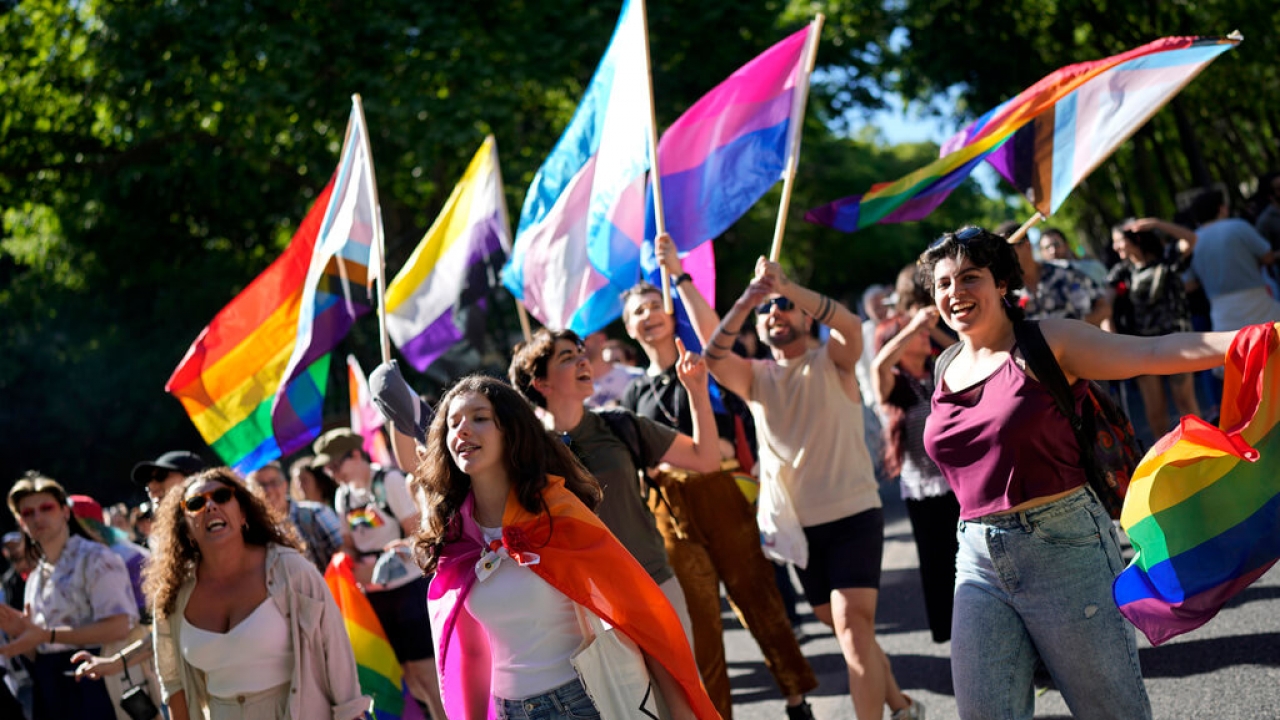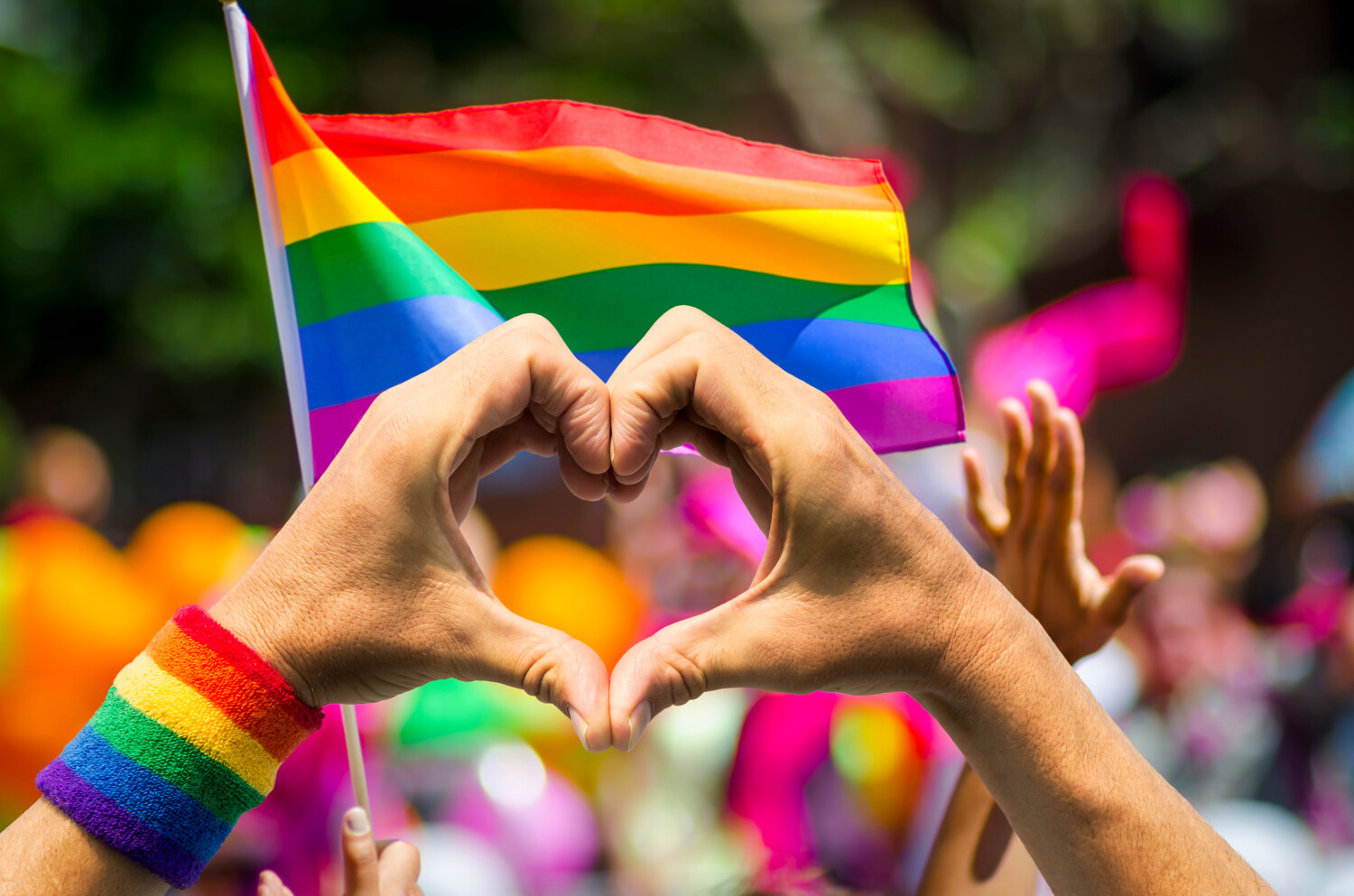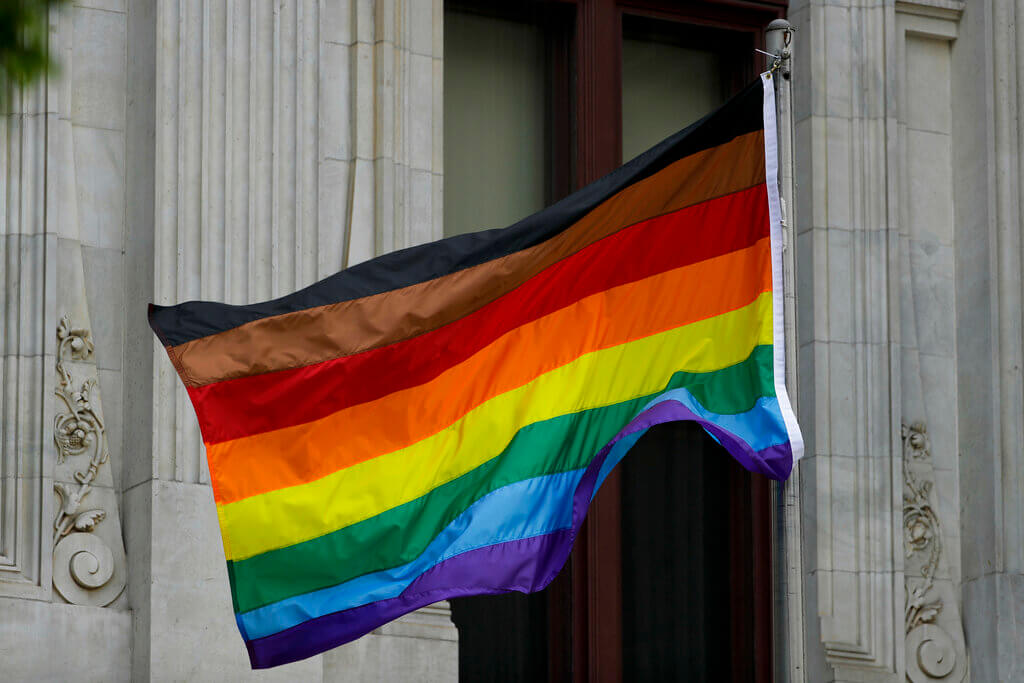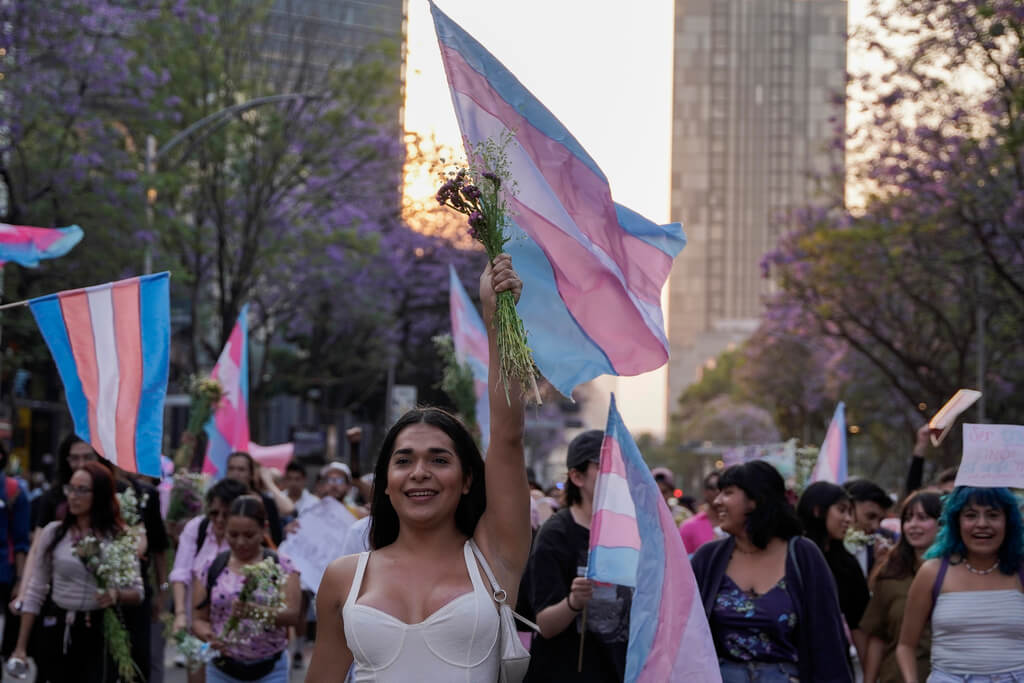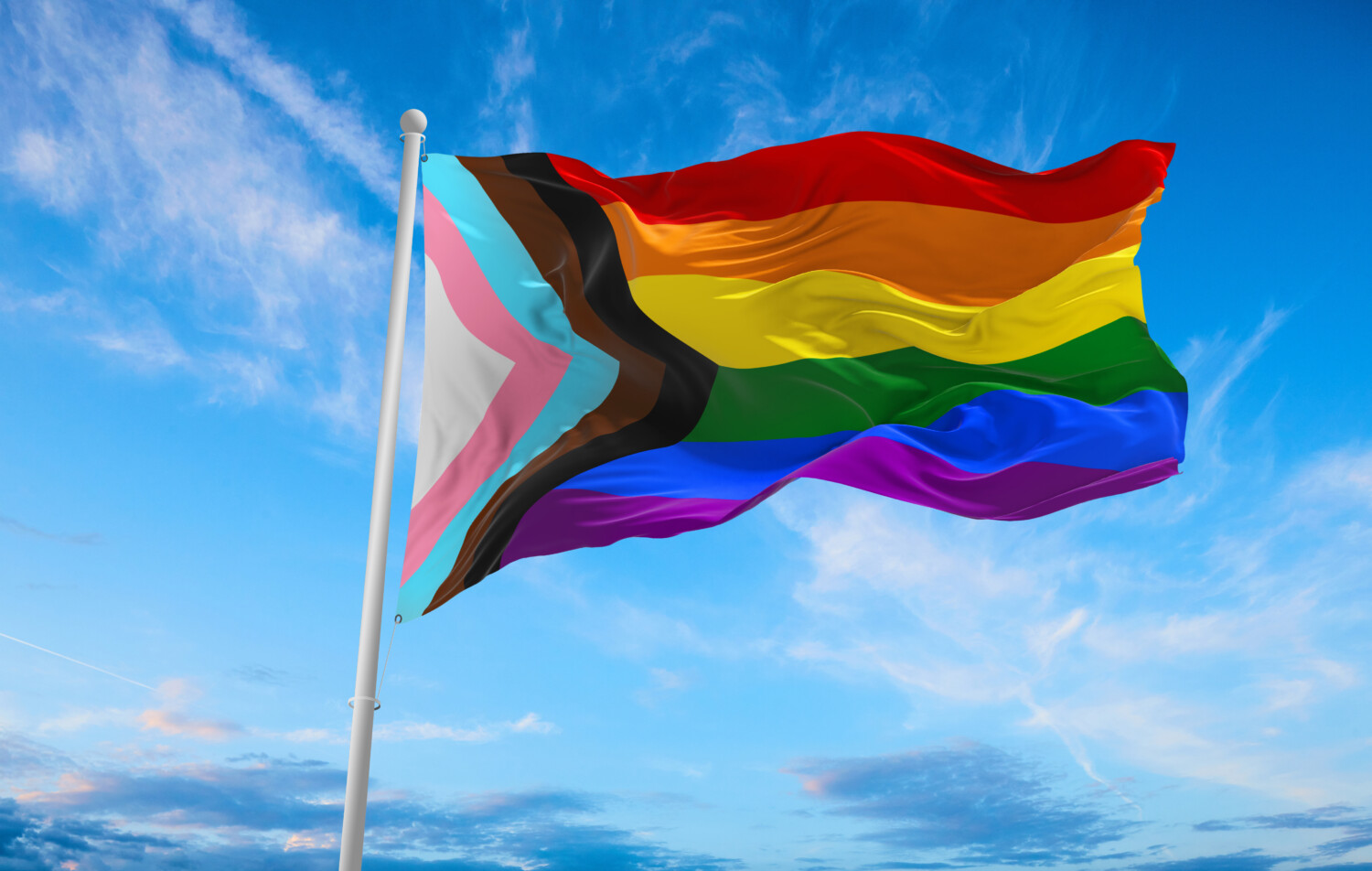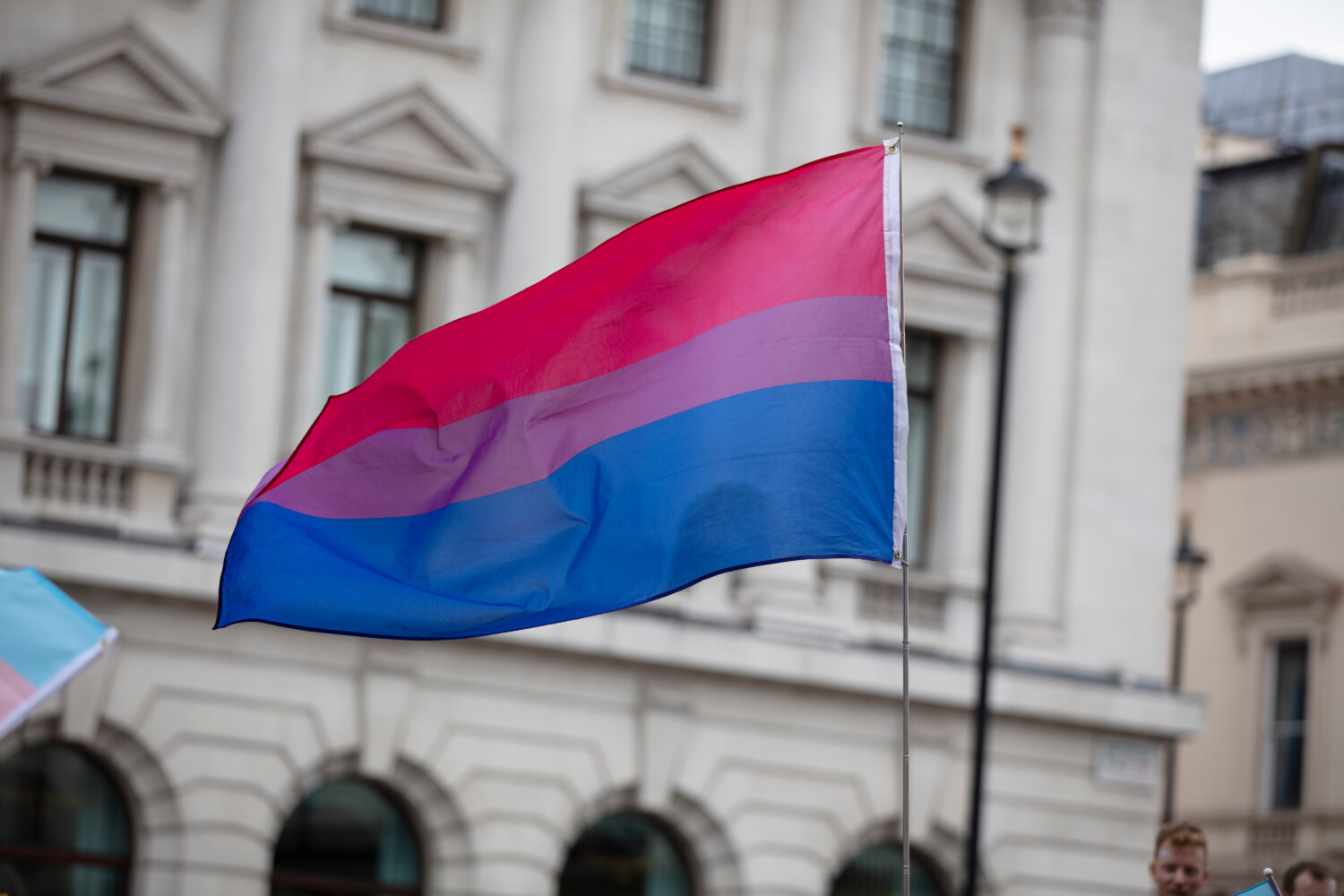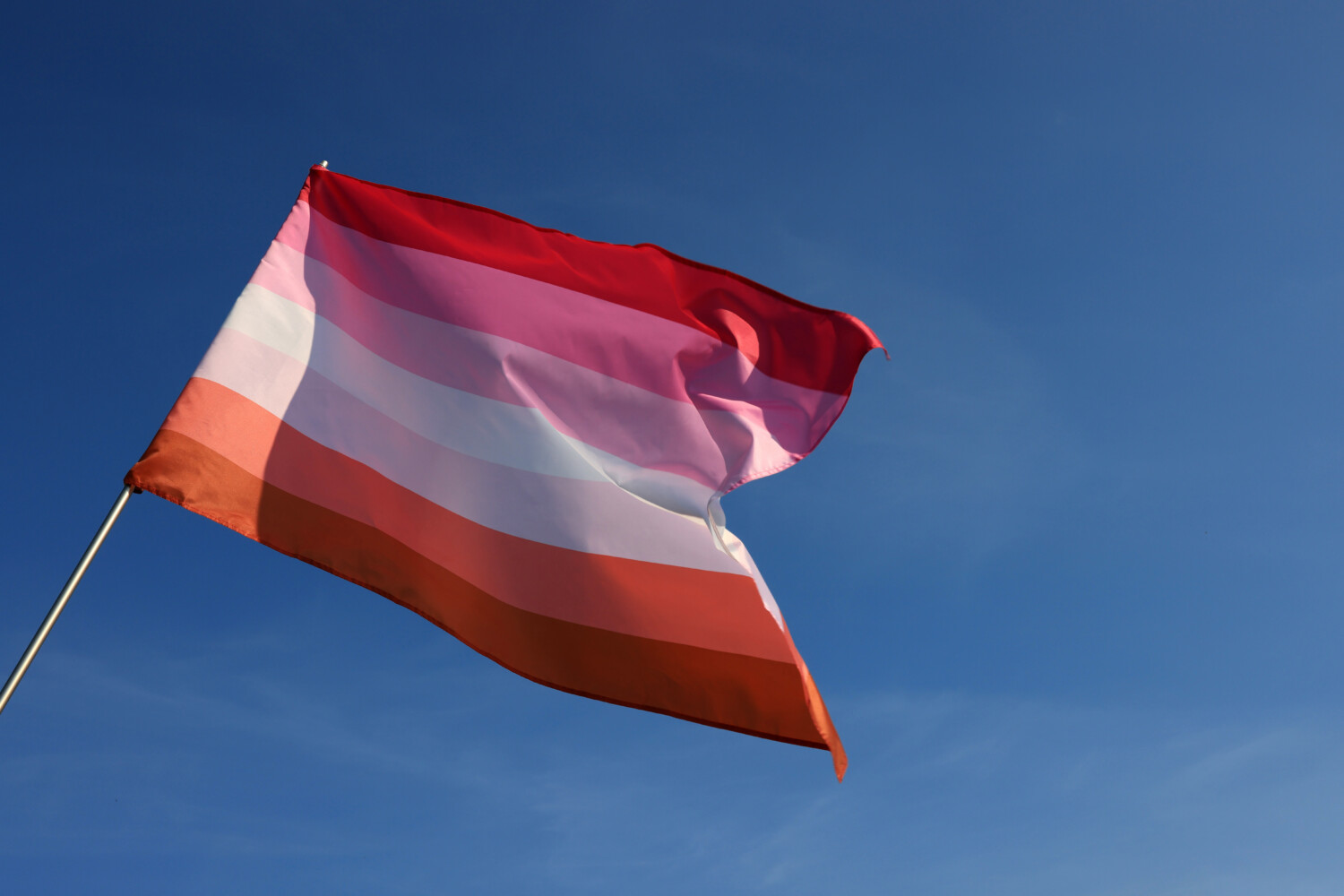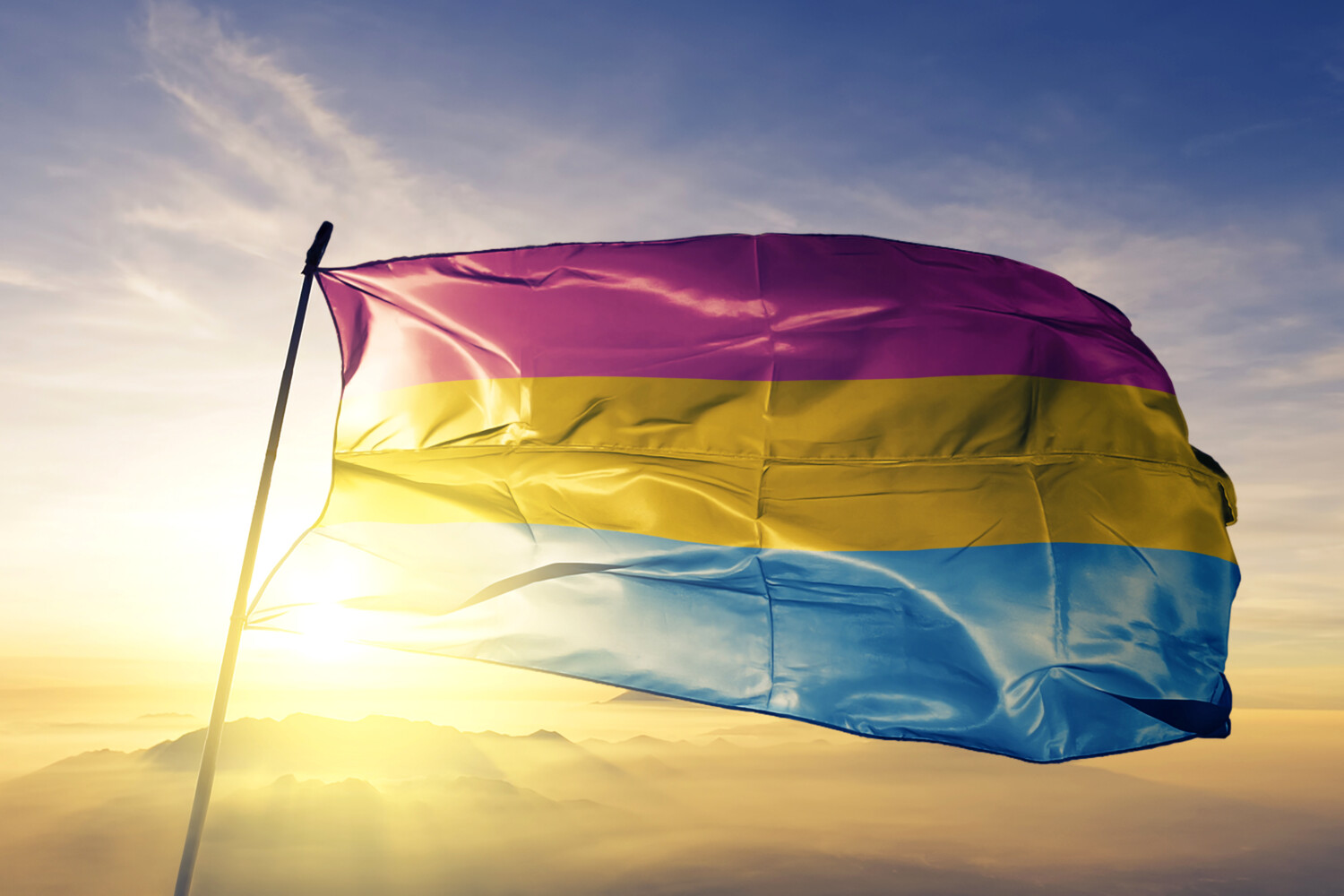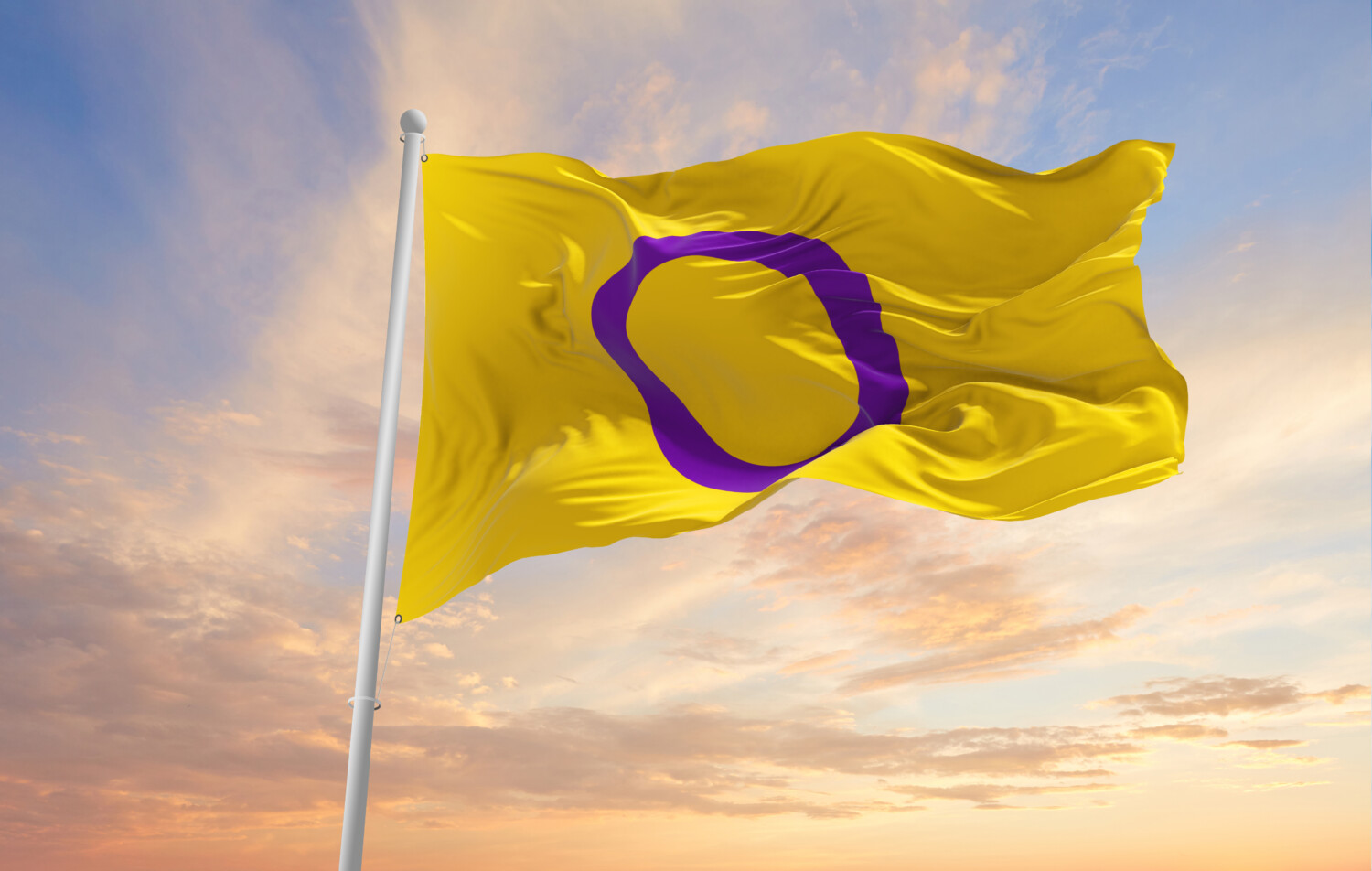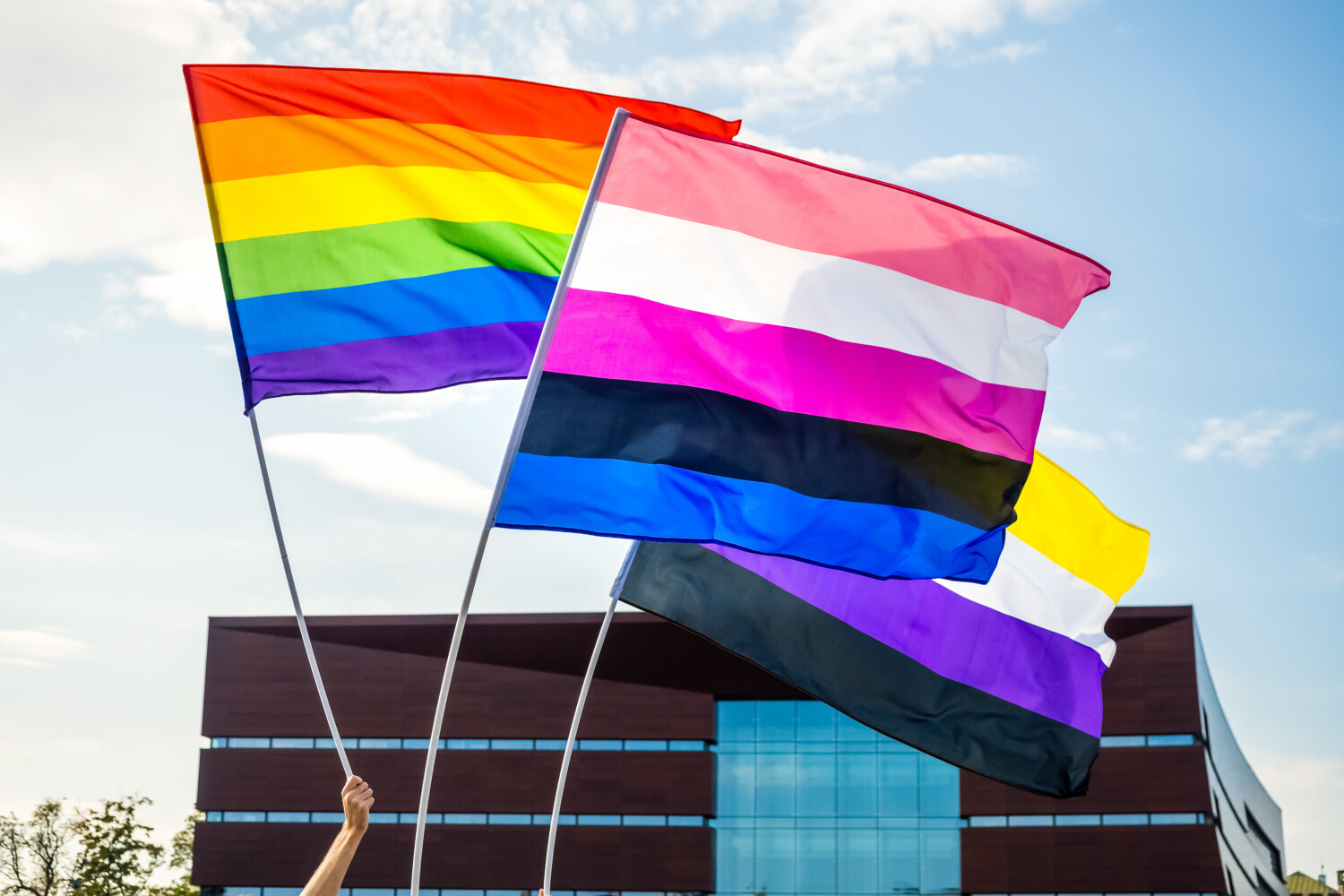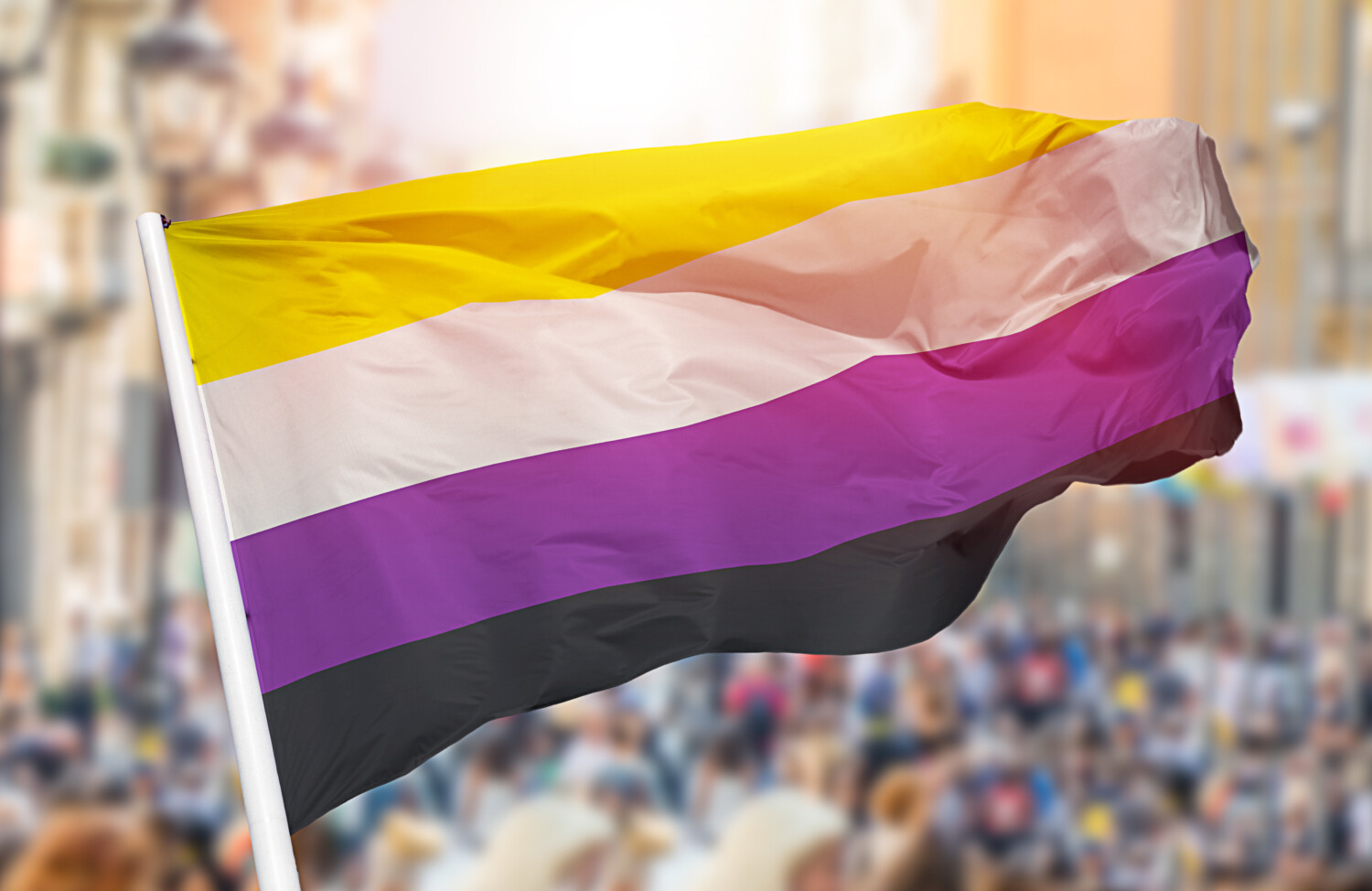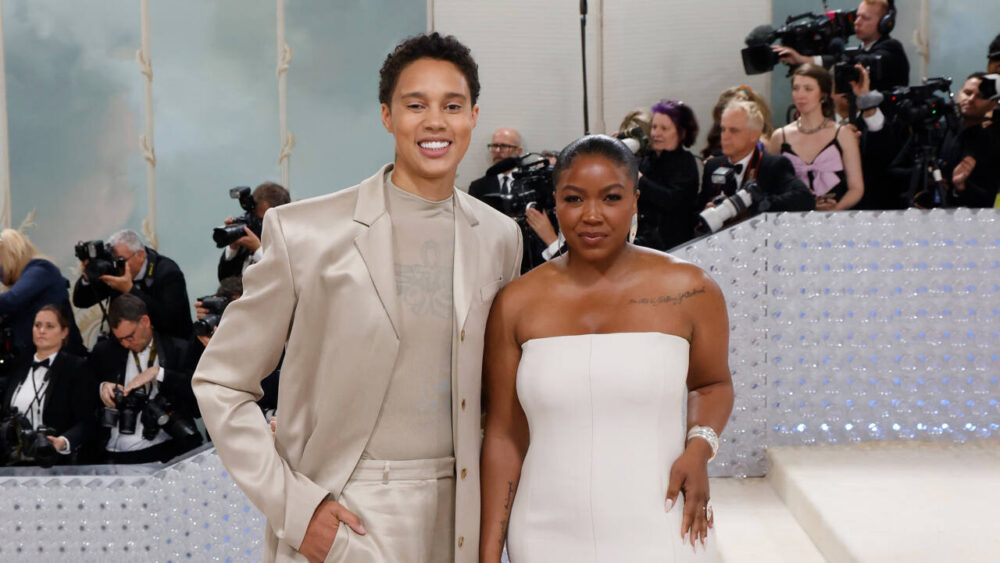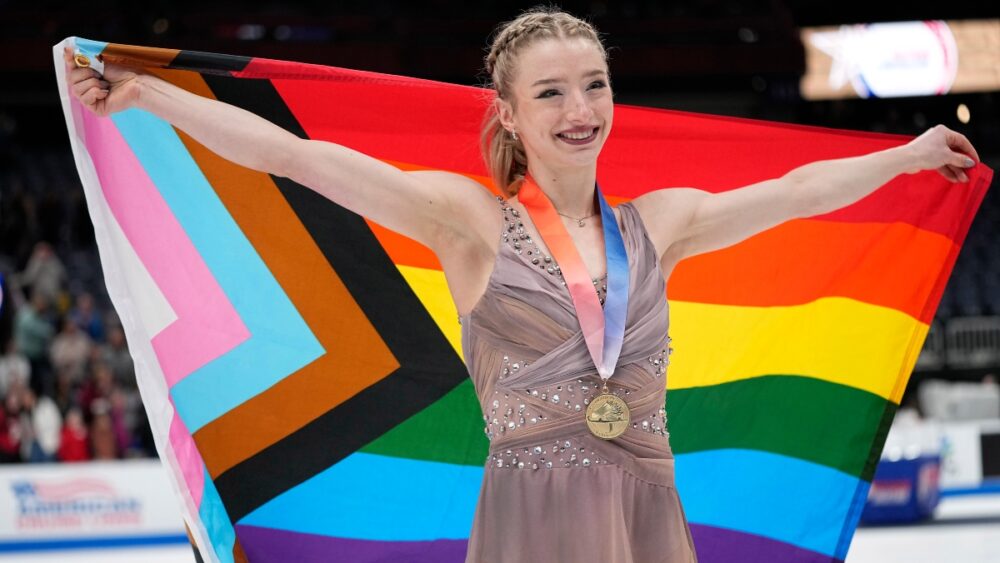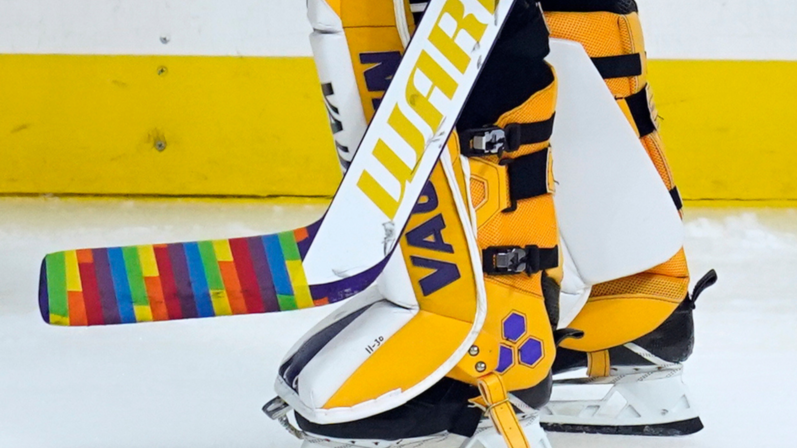The history and meaning of the most common LGBTQ+ Pride flags
When we think of the Pride flag, many of us still envision the traditional six-color rainbow-striped flag that has been in existence for over four decades, but over the years more inclusive versions of the flag have been created to specifically acknowledge and represent the trans, intersex and persons of color within this beautiful, diverse community.
There are a total of 50 LGBTQ+ Pride flags recognized by the community across the world. While we would love to talk about all 50 flags, we’ve narrowed it down to the 10 most common flags you will see during Pride celebrations in June.
Traditional Pride Flag
The Gilbert Baker Pride Flag was the first flag to be introduced in 1978, originally with eight stripes. It was commissioned by gay icon Harvey Milk, and after his death, the demand for the flag skyrocketed. Due to a manufacturing issue, one of the stripes was accidentally removed. Later on, Baker decided to remove a second stripe, and that’s how the traditional and most common of the bunch, the six-color rainbow-stripe flag that we see today, was born.
The flag’s original stripes — hot pink, red, orange, yellow, green, turquoise, blue, and violet — stood for sex, life, healing, sunlight, nature, magic, serenity and spirit. Today’s traditional flag is missing the hot pink and turquoise stripes, which represented sex and magic respectively.
Philadelphia Pride Flag
The Philadelphia Pride Flag is probably the second-most common flag you’ll see during Pride Month.
In 2017, the Philadelphia City Council commissioned the creation of this flag with the intention of including and acknowledging queer communities of color that have frequently been overlooked within the mainstream LGBTQ+ movement.
This flag has the six stripes of the traditional flag with the addition of a black stripe and a brown stripe, symbolizing people of color.
Transgender Pride Flag
The Transgender Pride Flag was designed in 1999 and debuted in 2000 at the Phoenix Pride parade. It was created by U.S. Navy veteran Monica Helms as a symbol of trans diversity and rights.
The flag is adorned with blue and pink stripes and a single white stripe.
The baby-pink and baby-blue stripes are associated with the colors society has long associated with girls and boys, while the white stripe represents individuals who are intersex, transitioning, or do not identify within a defined gender.
Progress Pride Flag
The Progress Pride Flag was designed by nonbinary artist Daniel Quasar in 2018.
The flag is a redesigned version of the Traditional Pride Flag that combines elements from the Philadelphia Pride flag (black and brown stripes) and the Transgender Pride Flag (blue, pink and white stripes) on an arrow on the left side. This arrow represents transgender and nonbinary individuals, marginalized communities of people of color and those affected by HIV/AIDS.
“The arrow points to the right to show forward movement and illustrates that progress [towards inclusivity] still needs to be made,” Quasar said about his design.
Bisexual Pride Flag
The Bisexual Flag was created in 1998 by Michael Page to promote bisexual pride and visibility.
The flag has three color stripes: pink, purple and blue.
According to Page, “the pink color represents sexual attraction to the same sex only (gay and lesbian), the blue represents sexual attraction to the opposite sex only (straight) and the resultant overlap color purple represents sexual attraction to both sexes.”
Lesbian Pride Flag
The Lesbian Pride Flag has had several iterations over the decades.
The original version was the Labrys Lesbian Flag, designed by Sean Campbell in 1999 and released in 2000. It consisted of a violet background with a black inverted triangle and a labrys, a mythical weapon used by the Amazon, but the flag is not widely used as it is linked to a derogatory term.
In 2018, Emily Gwen created a flag that is the one we see most now, with stripes of different shades of orange and pink divided by a single white stripe, which are meant to represent the different types of femininity within the lesbian community.
Pansexual Pride Flag
The Pansexual Pride Flag was created and released online around 2010.
The term “pansexual” originates from the Greek prefix “pan,” which means “all,” and the flag is defined by three stripes: pink, yellow and blue.
The pink stripe represents attraction to women, the yellow represents those who identify as genderqueer, nonbinary or those who do not identify within a defined gender, and blue represents attraction to men.
Intersex Pride Flag
In 2013, the Intersex Pride Flag was created by Morgan Carpenter, the co-chair of Intersex Human Rights Australia.
Intersex individuals are those who are born with physical sex characteristics that do not align with the conventional definitions of male or female bodies.
This flag is yellow with a purple circle right in the middle.
The creator chose yellow and purple because those colors are seen as gender-neutral colors, while the circle represents wholeness and completeness.
Genderfluid Pride Flag
The Genderfluid Pride Flag was created in 2013 by JJ Poole as a way to symbolize individuals whose gender identity and/or expression is fluid and capable of fluctuating at different times or in various circumstances.
The flag has five stripes: pink, white, purple, black and blue.
Pink represents feminity; white represents a lack of gender; purple represents a mix of both masculinity and femininity; black represents all genders; and blue represents masculinity.
Nonbinary Pride Flag
The Nonbinary Pride Flag was created by Kyle Rowan in 2014.
The flag represents those who do not identify with either binary gender or within the binary at all.
The flag has four stripes: yellow, white, purple and black. The stripes represent a gender outside of the binary: those who identify with multiple or all genders, those who fall between female or male binaries and those who feel they are without a gender.


